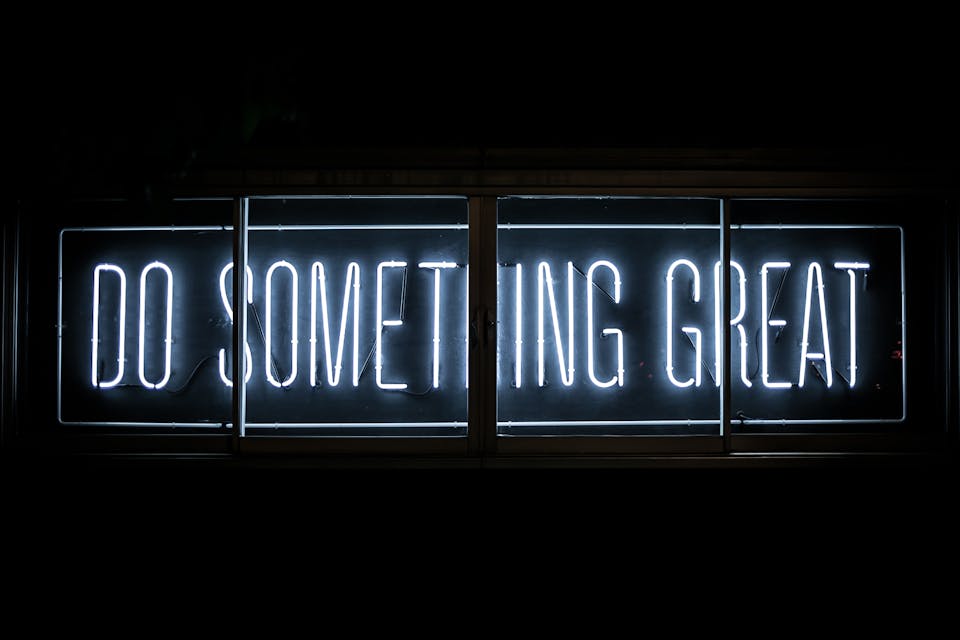August 27, 2021
How to Create a Habit (and Break Bad Ones)
Struggling to break a bad habit? Learn how you can swap it out for a healthy one with these handy tips from the experts.

For today's reading, we’ve gathered a variety of Knowledge Hacks that all unpack one important life lesson: the art of habit-building.
The formation of healthy habits is something that many of us try, from improving our sleep routine, to heading to the gym more frequently, but many people fail before they reach success. While there is no science-backed way for creating these good routines, there are some easy steps we can take to ensure we get closer to our rewards.
Habits Mastery: The Complete Guide to Good Habits- Silviu Marisk: Effective Learning Lab
On Uptime
The first of our habit-building insights stems from this Habits Mastery course. We perceive a bad habit as something that may require urgent action - something like smoking, or drinking alcohol.
But each day, most of us are following smaller bad habits, too, like biting our fingernails, sitting with poor posture, or chewing a little louder than other people might like.
 The secret for eliminating this behaviour is to identify its habit loops, and figuring out the underlying motivations of why you do it regularly.
The secret for eliminating this behaviour is to identify its habit loops, and figuring out the underlying motivations of why you do it regularly.Step one is to discover your bad habits in the first place. It’s only once you’ve done this that you can focus on reducing these habits, one by one.
Once you know your habits, you can begin to change them. Monitor them and try to focus on them individually, rather than attempting (and potentially failing) to tackle them all together.
Personal accountability can be helpful, as it allows you to both monitor progress and motivate yourself. Of course, we all make mistakes, but we shouldn’t dwell on them. Think of a diet, for example: one bad day after a week of eating clean should not mean a failure, and to ‘start again.’ Because another clean week later, in reality, we have completed a day short of two weeks, but many will just consider the most recent week.
The 7 Habits of Highly Effective People- Stephen R. Covey
On Uptime
Whether they’re good or bad, Covey explains the power of a habit.
 Habits are powerful factors in our lives. Because they are consistent, often unconscious patterns, they constantly express our character and produce our effectiveness… or ineffectiveness.
Habits are powerful factors in our lives. Because they are consistent, often unconscious patterns, they constantly express our character and produce our effectiveness… or ineffectiveness.The first step to create, destroy or change a habit is to work from the inside out, according to the author of this book. Staying focussed, with a clear goal, keeps us on track to be productive, eliminating unhealthy habits and forming better ones.
Many of us never learned to communicate properly, and that’s one of our downfalls. We focus on being heard rather than listening. Resist the urge to give advice, and practice empathy, giving others your full attention.
But above all else, no matter how much work we put into forming good habits, none will stick if we fail to look after ourselves. Refilling ourselves emotionally, mentally, spiritually and physically helps to recharge our batteries, and only when we are our most nourished can we continue to develop.
Atomic Habits - James Clear
On Uptime
In this book, Clear explores the cumulative effects of persistent efforts.
 Changes that seem small and unimportant at first will compound into remarkable results if you’re willing to stick with them for years.
Changes that seem small and unimportant at first will compound into remarkable results if you’re willing to stick with them for years.What sets Clear’s work apart from many others is that he breaks down the formation of a habit into four simple steps: cue, craving, response, and reward. Each step feeds the next, and so the cycle goes on. Decide what you want to do, and make small changes frequently for delivered rewards.
To build a habit, he says that we should make the work attractive. What gets us motivated is the anticipation of a reward, not the fulfilment of one. As such, it’s good practice to adjust your goals as you approach them, to give yourself a refreshed outlook. Holding yourself accountable is similarly important, and keeping a log of progress can be both motivating and rewarding in itself. Take health and fitness, for example. Reaching your end goal may seem a long way away, but tracking each reduction in body fat, or each increase in muscle mass, can highlight the incredible work you’re putting into your habit.
Take action with the four simple steps: take a cue from something and use it to help determine how you want to be; get a craving for that and anticipate the end goal; respond by making small and manageable steps; track your progress; and amend your goal as you approach it as your desires develop.
Hooked - Nir Eyal
On Uptime
Author and lecturer Nir Eyal is probably best known for this book. Rather than focusing on how we as individuals can form habits, he looks at external influences that cause this subconsciously. Using this, we can apply the learnings to our understanding of forming new habits.
 To change behavior, products must ensure the user feels in control. People must want to use the service, not feel they have to.
To change behavior, products must ensure the user feels in control. People must want to use the service, not feel they have to.We learn that the most successful products are the ones that make us turn them into habits. The iPhone has been the most profitable product in the world, while one in seven people uses Facebook. We don’t need either, but both have become habits that can be hard to break. As such, we become loyal, long-term customers; many iPhone users will return year after year for the latest model. Once we are hooked, we become desensitised to price changes, due partly to our intense loyalty - this allows companies to increase prices gradually over time to make their products more lucrative.
In the points above, James Clear indicates that a changing goal can be effective, a point supported by Eyal’s work. The Facebook newsfeed is addictive because the reward that we anticipate is constantly evolving. Text became photos, and photos became videos.
A successful product, and subsequently a habit, should answer two questions, teaches Eyal: 1), Does the product improve the life of a user?; 2), would you use the product yourself?
Whether you want to break a bad habit, or form a healthy one, the research and key learnings from each of these hacks all point toward one primary action: small steps and regular check-ins are a sure-fire way to succeed. Hold yourself accountable, and adjust your goal so that you have something new and exciting to anticipate.
To start building healthier habits, you can start a daily reading streak over on Uptime to keep your brain happy. (And if you're unsure of where to start, the lessons from Dan Hurley's Smarter do a good job of explaining the importance of training your brain.)
Recommended















